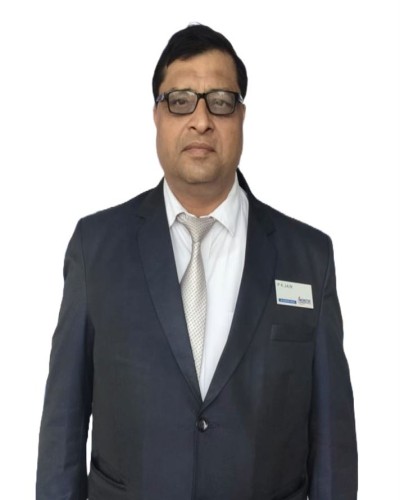
BUSINESS HEAD - SOLAR | SOLAR MICROTEK
MR. PRAVEEN KUMAR JAIN
Q. What are Microtek’s key goals in the solar energy sector, and how does the company differentiate itself from its competitors?
Microtek is a leading player in power back up industry since 1986 and has its sales and service operations PAN India.
It has been almost a decade now when we entered into solar products and solutions to cater to market growing needs.
Today we are among leading market players in solar energy sector PAN India and offer a wide range of solar products and solutions in off grid , on grid and Battery energy storage solutions.
We have a strong and wide spread network of distributors and retailers to reach every nook and corner of the country.
we have our own after sales service centres and team to ensure faster response and quality service to our consumers.
Our products are BIS certified .Our key objective is to promote solar energy and gain sizable market share in Solar Rooftop segment.
Q.How does Microtek ensure that its products remain at the forefront of solar technology?
We have our own Global RnD Centre to design and develop most innovative, energy efficient and cost effective products using most advanced state of the art technology.
We have highly professional and well qualified and experienced team of Engineers in our RnD department.
We have multiple state of the art manufacturing plants having very high level of backward integration to ensure quality and reliability of our products at optimized cost.
World class inhouse test lab make sure our products are highly reliable and safe .
Q. What are the primary factors that influence the design and development of your solar products?
Being Market leader it is our imperative to always focus on futuristic design, Features, economical and user friendly design and development of our products.
Q. Could you provide a detailed overview of the solar products that Microtek offers to both retail and commercial customers?
We offer complete range of off grid and on grid products for use of residential, commercial and industrial segments.
Our off grid range offers Solar PCU from 0.9 KVA up to 10KVA and customers have a choice to select MPPT or PWM technology Solar Batteries (C10) range is from 20AH up to 200AH. We have wide range of Solar panels rating from 40 Watt up to 550 Watt .
Our 540 Watts onwards solar panels are based on latest technology of half cut mono perc and bi-facial solar cell giving fast pay back period to consumers.
Our MPPT Solar PCUs are True MPPT based Technology to ensure maximum extraction of solar energy from Solar Panels.
We have wide range of on grid inverters starting from 1 Kw up to 250 Kw covering needs of all kinds of consumers ( Residential , commercial , industrial etc.
We also have a very innovative product range called solar conversion kits. These are designed and developed for those consumers who want to convert their existing non solar inverters and battery into solar system.
We are into complete rooftop solutions for consumers in on grid as well as off grid marker.
Our on grid rooftop solutions have been a big hit among residential consumers under PM Surya Ghar Bijli Yojana where consumers are getting subsidy from Govt. We have large base of On grid rooftop solution in Commercial and industrial segments.
Our on grid inverters are having 10 years onsite warranty giving complete peace of mind to consumers.
Q.What specific initiatives has Microtek implemented to reduce its carbon footprint?
Efficiency of solar products play a very important role in ensuring optimum use of green energy and hence Reduction carbon footprints.
Our focus is always to design and develop high efficiency products . Many of our offices are running on solar power.
Q.What are Microtek’s objectives and strategies for expanding its product offerings and entering new markets in the future?
Our key objective is to gain sizable market share in the Solar energy segment . We are leveraging our wide spread distribution network and strong in house infrastructure of the Sales and service team.
We are growing in both segments of off grid as well as on grid rooftop solutions.
We will keep on launching the latest technology solar panels, on grid inverters and off grid PCUs.
We regularly review market needs to design and develop futuristic products

.gif)
.jpeg)